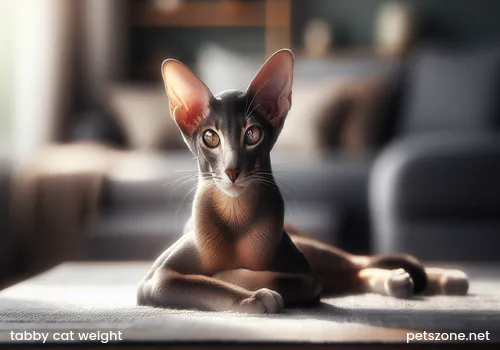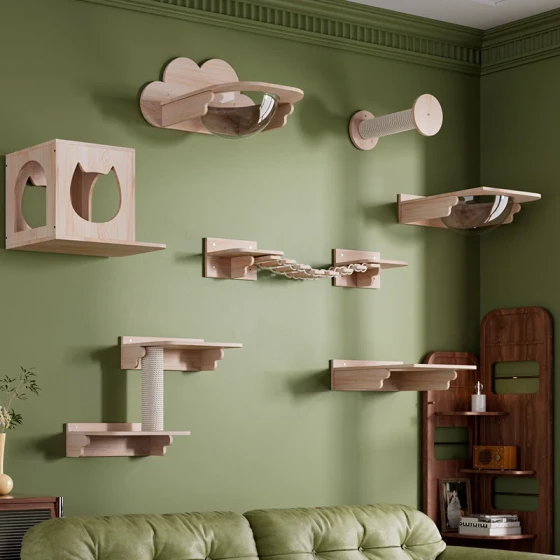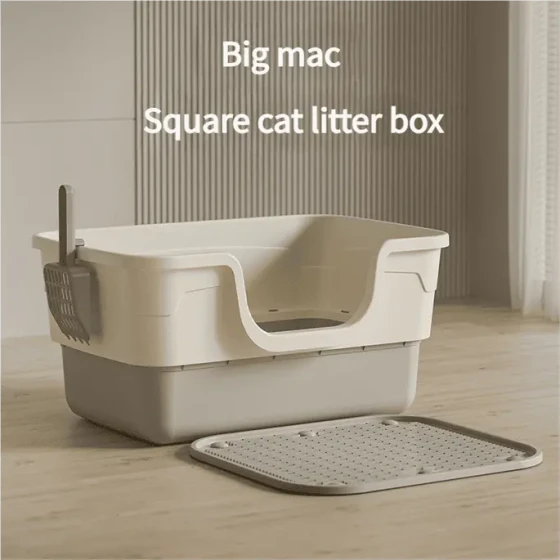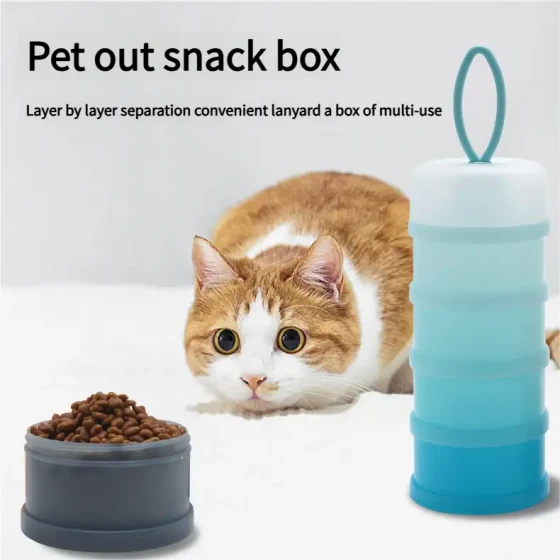Weight of Tabby Cat_What Is the Standard Weight
“How much does my tabby cat normally weigh?” This seemingly simple question actually hides many details worth discussing. Whenever I see similar questions, countless cat owners imagining weighing their cats with confused faces come to my mind.
First, let me give a rough range so everyone has an idea. Generally, an adult (usually over 1 year old, with basically mature body development) Chinese tabby cat, male typically weighs around 4 - 6 kilograms. Some with particularly large bone structure or “naturally gifted” food-loving cats reaching 7 kilograms is not unheard of. The female is relatively smaller, usually weighing between 3.5 - 5.5 kilograms.
However, please pay attention to this "however".

This numeric range resembles more of a "fuzzy interval" based on big data, rather than a precisely defined “standard” like tolerance for industrial parts. Why? Because the tabby cat, our local pride, strictly speaking, is closer to a “natural breed” or “landrace.”
What does that mean? Simply put, think about China's rural dogs. Different regions have different appearances and body types, but they share certain characteristics adapted to local environments. The tabby cat is similar; it is a breed naturally reproduced and shaped by survival of the fittest over thousands of years in China, rather than an “artificial breed” like Siamese, Ragdoll, or Maine Coon, which have been selectively bred for a long time according to strict, specific standards (like those thick books from CFA, TICA).
This leads to several key differences:
- Higher genetic diversity: The gene pool of tabby cats is relatively large and complex, so individual differences in body shape and bone structure are naturally greater than purebred cats. Your neighborhood's “Fat Tiger” and the agile “Heroine” from the nearby community might both be pure tabbies, and a 1-2 kg weight difference is perfectly normal.
- Lack of unified “official standards”: Although CFA (Cat Fanciers’ Association) accepted Chinese Li Hua cats around 2010 and gave a general size description (medium to large, muscular, strong bones), this is more of a recognition and preliminary description, not a widely enforced and refined weight standard like mature breeds. Moreover, systematic breeding and standards development for tabby cats domestically are still in early stages. We tend to appreciate their “natural and fit” elegance.
Therefore, obsessing over an exact "standard weight" down to one decimal place is not as meaningful for tabby cats as it is for show champion cats.
Beyond the Numbers: A More Scientific Measurement—Body Condition Score (BCS)
Instead of stressing over the number on the scale, learn the method veterinarians use more commonly and scientifically: Body Condition Score (BCS).
It sounds fancy but is actually simple, evaluating the cat's level of fat by visual and tactile inspection. The internationally common system uses 5 or 9 points. Here we describe it more intuitively:
- Too thin (BCS 1-2/9 or 1/5): Ribs, spine, pelvis very prominent, almost no fat covering, waist and abdominal lines extremely sunken. Usually indicates malnutrition or underlying disease.
- Underweight (BCS 3/9 or 2/5): Ribs and spine easily felt, with some fat coverage, noticeable waist, slight abdominal tuck.
- Ideal (BCS 4-5/9 or 3/5):
- Visual: From above, clear waistline behind ribs; from side, abdomen smooth or slightly tucked (no potbelly or just a little).
- Tactile: Lightly touch the sides of the chest, ribs can be felt but covered with a thin layer of fat—like feeling bone under the skin on the back of your hand, not sharp like knuckles, nor completely unnoticeable.
- Overweight (BCS 6-7/9 or 4/5): Ribs not easily felt and require pressure, waistline not obvious or gone, abdomen starts sagging with a little belly.
- Obese (BCS 8-9/9 or 5/5): Ribs very hard or impossible to feel, covered by thick fat, no waistline, back may appear broad and flat due to fat accumulation, abdomen clearly sagging and possibly affecting mobility.
Key point: Ideal body condition (BCS 4-5/9 or 3/5) is the goal, not a specific kilogram number.
A 4-kilogram female tabby with a small delicate frame might be ideal, but if the frame is large, 4 kg could be underweight. Conversely, a 6-kilogram male tabby with a great frame and muscular may be a fitness champion; if average frame but soft fat, then clearly "obese.
“Variables” Affecting Tabby Cat Weight
Besides the breed itself, many factors affect your tabby's weight:
- Gender: As mentioned before, males tend to weigh more than females.
- Age: Kittens grow fast with large weight changes; adults stabilize; older cats (usually above 7 years) slow metabolism, easier to gain weight or may lose weight due to muscle loss or illness.
- Spay/neuter status: Hormonal changes post-surgery can lower metabolism and increase appetite; without diet control and exercise, easier to gain weight. However, this is not guaranteed; management matters most. Studies abroad show neutered cats reduce basic energy needs by about 20-30%, so adjusting food amount is important.
- Diet: Eating more or calorie-rich food (especially high-carb dry food) easily leads to fatness. The nickname “foodie cat” is well deserved; many tabbies have impressive appetites.
- Exercise: Free-range or semi-free-range tabbies that jump around and patrol their territory daily typically don't get fat. Indoor-only tabbies lacking interaction and play burn less energy and are more prone to fat accumulation. Think of those “homebody cats” who rarely leave the house and tend to be chubbier.
- Health status: Some illnesses like hyperthyroidism cause weight loss, while hypothyroidism, diabetes, Cushing’s syndrome can cause obesity. Parasite infections can also cause weight loss. Rapid weight changes over 10% in short time require caution and prompt vet evaluation.
Practical Tips for Cat Owners
- Weigh regularly but don't overdo it: Weigh the cat monthly or quarterly, record and watch trends. Small fluctuations are normal; focus on long-term trends and significant changes.
- Learn to assess BCS: This is a core skill! When petting, also check ribs and waistline. Study BCS charts and compare with your cat. Unsure? Ask the vet to assess during vaccinations or check-ups and learn their technique.
- Scientific feeding is key:
- Choose high-quality cat food (high protein, appropriate fat, low carbs).
- Quantified feeding, not unlimited buffet. Follow feeding recommendations on packaging and adjust based on cat’s age, activity, and BCS. Smaller frequent meals work better than one or two large meals a day.
- Control snacks, especially high-calorie human food.
- Exercise is life:
- Spend daily playtime using toys like teaser wands, laser pointers (make sure cat can catch a real toy to avoid frustration), balls to simulate hunting.
- Provide cat trees, tunnels to enrich environment and encourage vertical movement.
- Even laid-back cat owners should ensure basic activity levels for their cats.
- Regular veterinary check-ups are essential: Adult cats should have annual exams; senior cats (7+) every six months. Exams help detect health issues early; abnormal weight is a key indicator.
In summary, for tabby cat weight, we don’t need to pursue a perfect number like for purebred show cats with calipers and standards. Their genes reflect adaptation and survival in the environment. A healthy tabby cat should be muscular, agile (even if a bit chubby, joints should be flexible), bright-eyed, and energetic.
Instead of asking “what is the standard weight,” ask “is my cat healthy?” When you can judge your cat’s body shape is proportionate and healthy by observation and touch, that is more valuable than memorizing any “standard number.” After all, raising cats is about happiness and health, right? Watching them either nimble or adorably clumsy is itself a kind of joy.



-560x560.webp)

